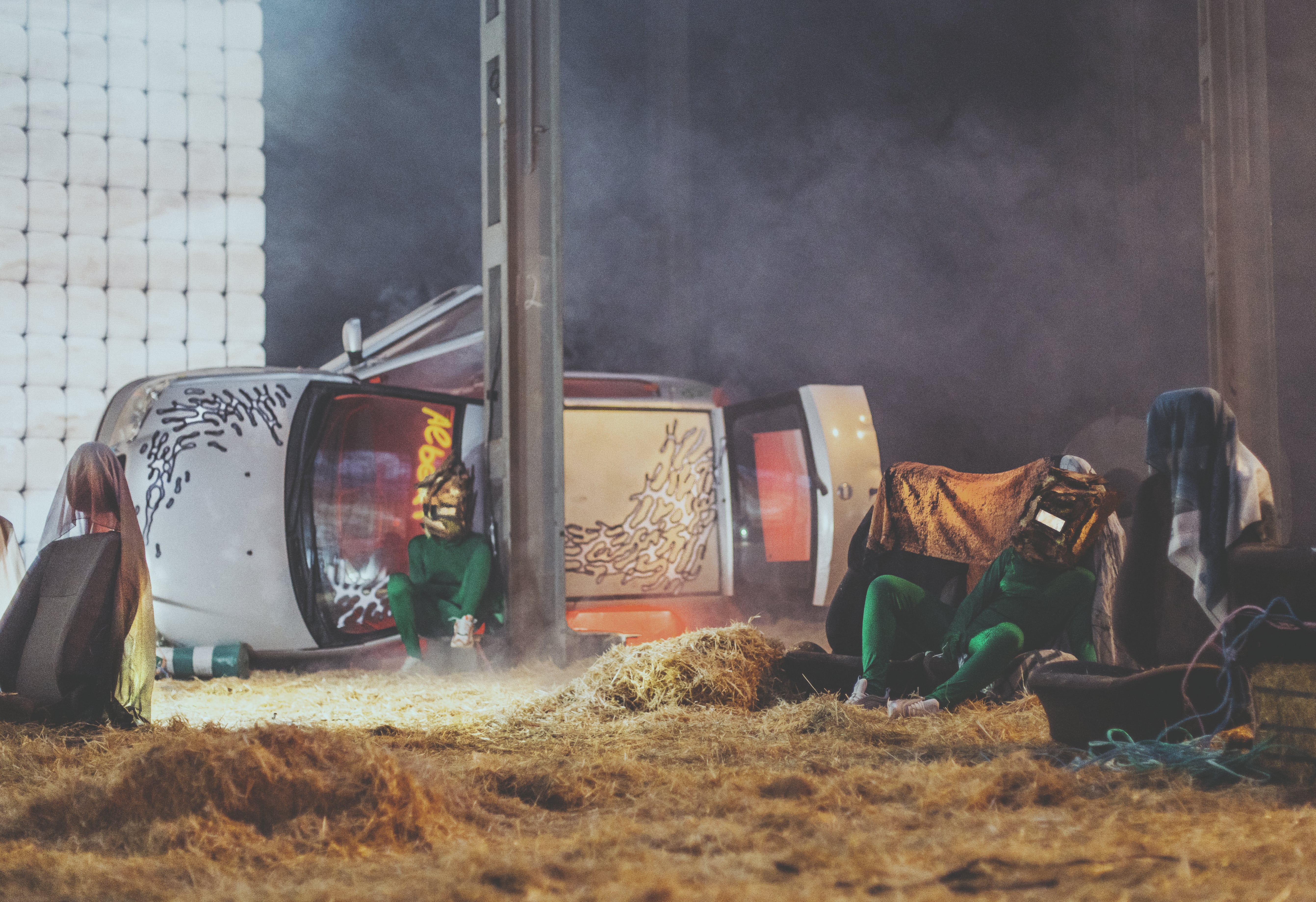![]()
ZONA CERO. Cenotafio Digital 2021
Mixed media installation
︎︎︎Espacio Cultural El Tanque. Tenerife, Canary Islands, Spain
“Zona Cero, Cenotafio Digital” is an immersive and interactive installation that proposesthe construction of an architecture of exception through the search and commemoration of the digital death of the image and the landscape. Where does the image die? Where do images go when they are forgotten? How much physical space does the digital image occupy?
![]()
![]()
![]()
![]()
![]()
![]()
![]()
![]()
![]()
![]()
![]()
![]()
ZONA CERO. Cenotafio Digital (2021)
Mixed media installation
Espacio Cultural El Tanque. Tenerife, Canary Islands, Spain
“Zona Cero, Cenotafio Digital” is an immersive and interactive installation that proposesthe construction of an architecture of exception through the search and commemoration of the digital death of the image and the landscape. Where does the image die? Where do images go when they are forgotten? How much physical space does the digital image occupy?
The construction of this “Ground Zero” arises from the idea of commemorating the disappearance of virtual images, which are left behind, buried and forgotten in the e-archive. With this monument of death or digital cenotaph, the absence of the digital image is commemorated and
honored. An absence generated by its own overproduction and abundance. A “cenotaph” is a symbolic architectural typology erected in honor of illustrious deceased, whose corpses are too far away to be buried or have been altogether lost. The word “cenotaph” derives from the Greek
kenos, whose meaning is “empty”, and taphos, which means “grave”. Here the dead bodies become those images of landscapes that have been dematerialized on the Internet and which have
been physically stored in deserts or glaciers, under robotized, dark and refrigerated architectures.
The main structure of “Ground Zero” consists of a large postnatural sphere that rests on a scrapped car. Named as “chromatrope”, this architecture captures every subject that walks
through the cenotaph, as an interactive panopticon that follows the visual morphology of a
GoogleStreetView Car. During the exhibition, all these bodies and shadows are registered by
this panopticon recorder, building collectively a moving image of reinterpreted abandoned landscapes. The bodies of the visitors become, then, stored as visual souls on the walls of this
post-industrial building. Furthermore, the other main installation piece is a drone panoramic video projection which represents a journey through the human-shaped and eroded geologies of
the Canary Islands, from stony and volcanic quarries to tanks or water reservoirs.
The car is another key element within “Zona Cero”. Here, it appears in a post-apocalyptic landscape as an abandoned and dismembered figure. This symbol manifests the fundamental role of
the individual vehicle as the creator of the collective territory. In a sense, Google StreetView has
become the panopticon of the 21st century: since, thanks, precisely, to this infamous vehicle we
can create the very images of the spaces where it moves through”
Moreover, the exhibition is accompanied by a sound installation created by local artist Pedro D. Sáiz, which mixes ambient and glitchy records of abandoned industries, emphasizing the already
unstable atmosphere of the whole installation. Adding another layer to the immersive character of the show, during the opening day three foreign and disoriented souls walked around the installation as bodies that were lost. Likewise, the exhibition is also broadcast via the artist’s
Twitch, so the audience can follow the development of the immersive multi-channel video
onto their own screens at home.
In Zona Cero, Cenotafio Digital, dead and alive natures coexist with machineries, automoviles,
screens, farming waste and artificially produced images, recreating the ruins of our future. By
mixing these funerary and mythological architectures, the space of “El Tanque” becomes an interactive and immersive cemetery. One where devastating feelings come to us after being witnesses of this abandoned landscape from the future, of this digital and physical archive of death.
This landscape of death is built through both naturalistic and technological elements, which resemble our future post apocalyptic ruins. As a cemetery expanding under soil, “Zona Cero” expands above the digital, for its images occupying space in the cloud. On one hand, this impact
of the digital in the physical world becomes evident in the technological yet material skeletons
spread across the exhibition: computers, keyboards, PC’s towers. On the other hand, the material presence on the e-archive is realized on the screen projection, since all images of physical altered territories become part of the cloud.
Furthermore, in “Zona Zero” the idea of “cenotaph” opens a direct dialogue with the building that
back in time was a crude oil refining deposit. Indeed, “El Tanque” is a trace of the industrial historical heritage of the city of Santa Cruz de Tenerife, a surviving and reconverted skeleton of
what was a striated and degraded panorama of the Canary coast. This scenographic installation offers the possibility of re-thinking the relationship between spaces currently dedicated to art
and the memories we keep from our past. As well as our relation with the elements we choose
(consciously or unconsciously) to keep for the near future, whether digital or physical. The museum, the place which in our desire to collect we consecrate to memory, has become a graveyard
of accumulation. The pieces from the past are small gestures already dead that are preserved in
the hope of obtaining a memory of what we thought was in the future.
Text by Yosi Negrín (@yosinegrin) and Paula Ramos Mollá (@paula1paula)
Photography: @guillewillreyes
Art production: Lava Art Project @lavaproject_( Belinda Marrtín Porras and Paula Ramos Mollá)
Sound installatio: Pedro D. Sáiz @pedrodsaiz
Graphic design: Marta Ochoa @mrtaochoa
AV technician: Fernando Currán @facurran
Assistant production @annapandozzi @facurran @rafa_ramos_reciclado
Performers :@alv_adina @altrxp @babi.claribel
Sponsored by Desguaces Tenerife
A project financed by Canarias Cultura en Red and by the Research, Creation and Artistic Pro-
duction Grants of the Spanish Ministry of Culture and Sports @culturagob












